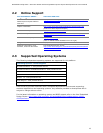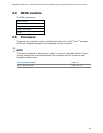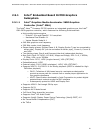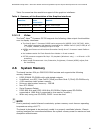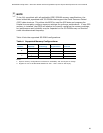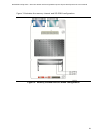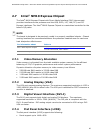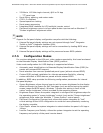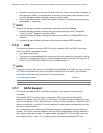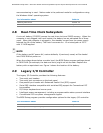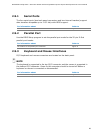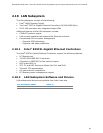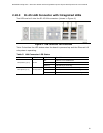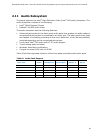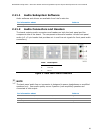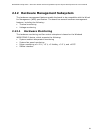
Embedded Intel® Atom Processor D2700 with Intel® NM10 Express Chipset
27
Maximum and Minimum Inverter Current Limit (%): allows the system integrator to
set maximum PWM%, as appropriate, according to the power requirements of the
internal flat panel display and the selected inverter board.
Panel Power Sequencing: allows the system integrator to adjust panel sequencing
parameters, if necessary.
NOTE
Support for flat panel display configuration complies with the following:
1. Internal flat panel display settings are not exposed through Intel
®
Integrator
Toolkit or Intel
®
Integrator Assistant GUIs.
2. Internal flat panel display settings will not be overwritten by loading BIOS setup
defaults.
3. Internal flat panel display settings will be preserved across BIOS updates.
2.7.6 USB
The board provides up to seven USB 2.0 ports, supports UHCI and EHCI, and uses
UHCI- and EHCI-compatible drivers:
Four back panel ports
Two ports are implemented with a dual port internal header for front panel cabling
One port is implemented with an internal header (brown-colored) that supports an
Intel
®
Z-U130 USB Solid-State Drive or compatible device
NOTE
Computer systems that have an unshielded cable attached to a USB port may not meet
FCC Class B requirements, even if no device is attached to the cable. Use shielded
cable that meets the requirements for full-speed devices.
For information about
Refer to
The location of the USB connectors on the back panel
Figure 9
The location of the front panel USB headers
Figure 11
2.7.7 SATA Support
The board provides two SATA interface connectors that support one device per
connector.
maximum transfer rate of 3.0 Gb/s on each port. One device can be installed on each
port for a maximum of two SATA devices. A point-to-point interface is used for host to
device connections, unlike PATA which supports a master/slave configuration and two
devices on each channel.
For compatibility, the underlying SATA functionality is transparent to the operating
system. The SATA controller supports IDE and AHCI configuration and can operate in
both legacy and native modes. In legacy mode, standard ATA I/O and IRQ resources
are assigned (IRQ 14 and 15). In native mode, standard Conventional PCI bus



